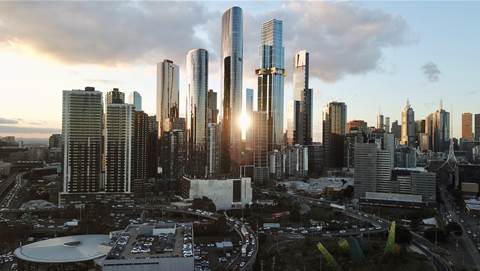NBN Co is fighting to keep some semblance of control over prime 5G spectrum it has rights to as a multi-year campaign to relieve it of the valuable asset edged closer to success.

That campaign, led by Vodafone since 2017, has consistently urged regulators to revoke 3.4GHz and 3.5GHz spectrum licensed to NBN Co because it is now infinitely more valuable than when it was allocated.
NBN Co uses the spectrum for its fixed wireless network. Its rights cover metropolitan and metro fringe zones for five capital cities, and were allocated before the band was declared a major 5G candidate.
For years, the Vodafone-led campaign looked like it would come up short, but in April the Australian Communications and Media Authority (ACMA) raised questions about how NBN Co’s urban 3.5GHz holdings should be treated.
Two specific options are formally on the table.
One would retain the status quo by giving NBN Co the right to negotiate with anyone that wanted at its valuable spectrum.
But a second option canvases the idea of relieving NBN Co of some of its urban licenses and re-allocating them “via market-based mechanisms (such as auction).”
Perhaps unsurprisingly, NBN Co is favouring the first option as it seeks to maintain some sort of control over spectrum that is either in use or that could be used in NBN Co’s own 5G ambitions.
“This approach is effectively no change to existing arrangements,” NBN Co said in a paper published on Thursday night.
“This approach provides NBN Co the flexibility to consider case-by-case access requirements of other parties, while ensuring NBN Co is optimally placed to manage interference and maximise future deployment options.”
Of the proposal to relieve it of urban licences, NBN Co said that would limit its future options, increase the likelihood of interference for its current fixed wireless network, and complicate management of licencing generally in the 3.5GHz band.
The great 3.5GHz defrag
Reform of management arrangements in the 3.5GHz band is the primary reason the ACMA inquiry exists.
The ACMA is trying to find safe ways to “defrag” - defragment - the band, which is currently home to a hodge-podge of operators, uses and licence types.
With the band now expected to be a major future home for 5G services, the ACMA is keen to make sure the finite asset is used in the most efficient way possible.
The ACMA has put a number of defrag options on the table, though commercial mobile operators aren’t particularly thrilled with any of them.
Telstra is pushing a completely separate model over concerns about older 4G LTE networks (such as NBN Co’s) interfering with its own planned 5G NR (New Radio) deployments in the band.
This is a problem that 5G equipment vendors such as Huawei have also raised. Essentially, carriers using different wireless technologies in adjacent spectrum would need to synchronise their radio networks to avoid interfering with one another.
That isn’t particularly new, but could cause result in both operators losing some flexibility in how they configure their networks.
Telstra is keen to avoid that by essentially separating older and newer networks operating in 3.5GHz spectrum with a series of “guard bands”.
The size of these “guard bands” could be shrunk over time if the older networks upgraded to use the same technology as the newer ones, thereby posing less of an interference risk, Telstra suggested.
Telstra claimed its proposal would not strip NBN Co of any current “aggregate” spectrum it had rights to, “nor does it require them to return any spectrum held under spectrum licences.”
However, Telstra did go on to say its proposal would require NBN Co “to forego future access to some of the spectrum notionally available to it” - which may make the proposal harder to stomach.
Vodafone, meanwhile, argues that defragmenting 3.5GHz should be a secondary concern to relieving NBN Co of the urban licenses and re-auctioning them.
“The ‘problem’ in the 3.5 GHz band should be viewed primarily as a reallocation of unused spectrum in an important spectrum band where the existing supply is unable to satisfy industry demand,” Vodafone said.
“It is unclear why the ACMA would prioritise the relatively minor incremental benefits of a defragmentation and promote the interests of … NBN Co, which has no use of this spectrum in the most populated parts of Australia (where the greatest benefits can be gained from excising and auctioning this unused spectrum).”


















.png&h=141&w=208&c=1&s=1)

